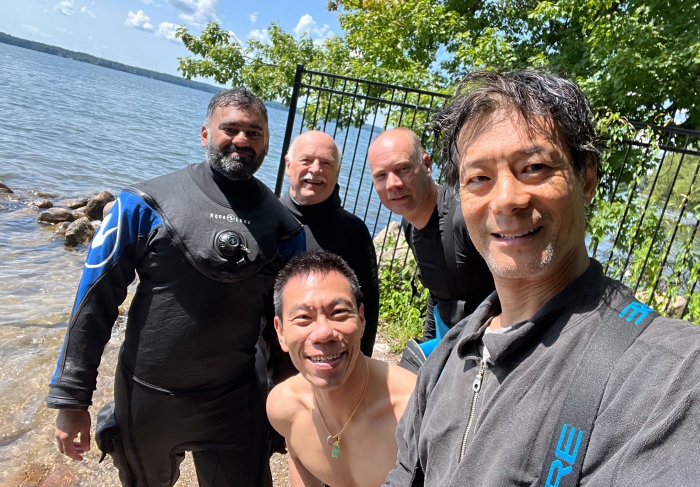
How To Improve Your Air Consumption In Scuba Diving
In scuba diving, our time underwater is often limited by how fast we use up the air in our tanks. Those who have poor air consumption, ie., air hogs, usually have to end their dives and get out of the water sooner than others. Here are some ways to help improve air consumption for scuba divers.
Drop Weight
Many divers use too much weight on their weight belts and/or integrated weight system pockets. When I was diving down south in the tropics in salt water, I started with 12 pounds and my air consumption was not as good as I liked. I was among the first divers returning back to the dive boat because I was running low on air. But I experimented by dropping 2 pounds to just using 10 pounds and was able to still descend. However, the huge bonus here was that my air consumption improved significantly and with just the 2 pounds difference, I was lasting longer underwater. I became one of the last divers to get out of the water after this weight change.
Same thing when I’m diving in cold water in Ontario. During the beginning and end of the dive season up here when the water temperatures are the lowest, I wear more layers underneath my drysuit and required 24 pounds to get down. When the water temperatures rise throughout the dive season enabling me to wear less layers, I can drop 4 pounds to 20 pounds. My air consumption improves and I can often do our local dives with just half a tank of air. So try dropping 2 pounds to see if you can still descend. If successful, your air consumption should improve.
Improve Your Trim
Another factor that will greatly influence your air consumption is your trim while underwater. Watch the new video from a recent dive at Shanty Bay below. Look at the difference of how some of the divers including myself leading with orange fins and the one diver with solid white fins. Notice that most of the divers are fairly horizontal in the water while the diver with white fins is more vertical at almost a 45 degree angle during much of the dive while finning.
The body position at 45 degrees will have much more resistance underwater than a more horizontal position which is more streamlined. More resistance will result in using up more air faster during a dive. Improving trim to a more horizontal body position will improve air consumption and use up less air during dives.
Many new BCDs have trim pockets near the shoulders to help rebalance weights to help with trip. I learned to improve trim without using such trim pockets since the BCD I used for most of my diving career did not have any. So I had to improve trim just by training and one great technique in the water to do this is just to hover while stationary or a very slow drift.
At some dive sites like Humber Bay, the end of the dive in the shallow areas near the exit point is when such an exercise can be utilized as part of a drifting safety stop. Just hover with arms out in a Superman position and make minor adjustments with your inflator and breathing so that you hover over the bottom. Enjoy the little fish while you do this without rushing out of the water. Doing this type of exercise on a regular basis will teach you to keep your legs and hip up to a horizontal position with your upper body. Over time, your swimming position underwater will get more horizontal improving your trim and air consumption.
You can also arrange to have video of yourself diving either in a practice pool or an open water dive. Sometimes we are not fully aware of our trim and by watching video of ourselves, we learn much faster.
Just Dive More
The final tip for improving air consumption is just to dive more. Diving more during a season will help you relax more while you become more familiar with the overall underwater environment. Your breathing will slow down and become deeper rather than rushed. This will improve your air consumption as you become more comfortable in the water.
If you combine all the above tips, you will notice that you last longer during dives both up here in cold water and down south in tropical water. You will no longer be an air hog.
